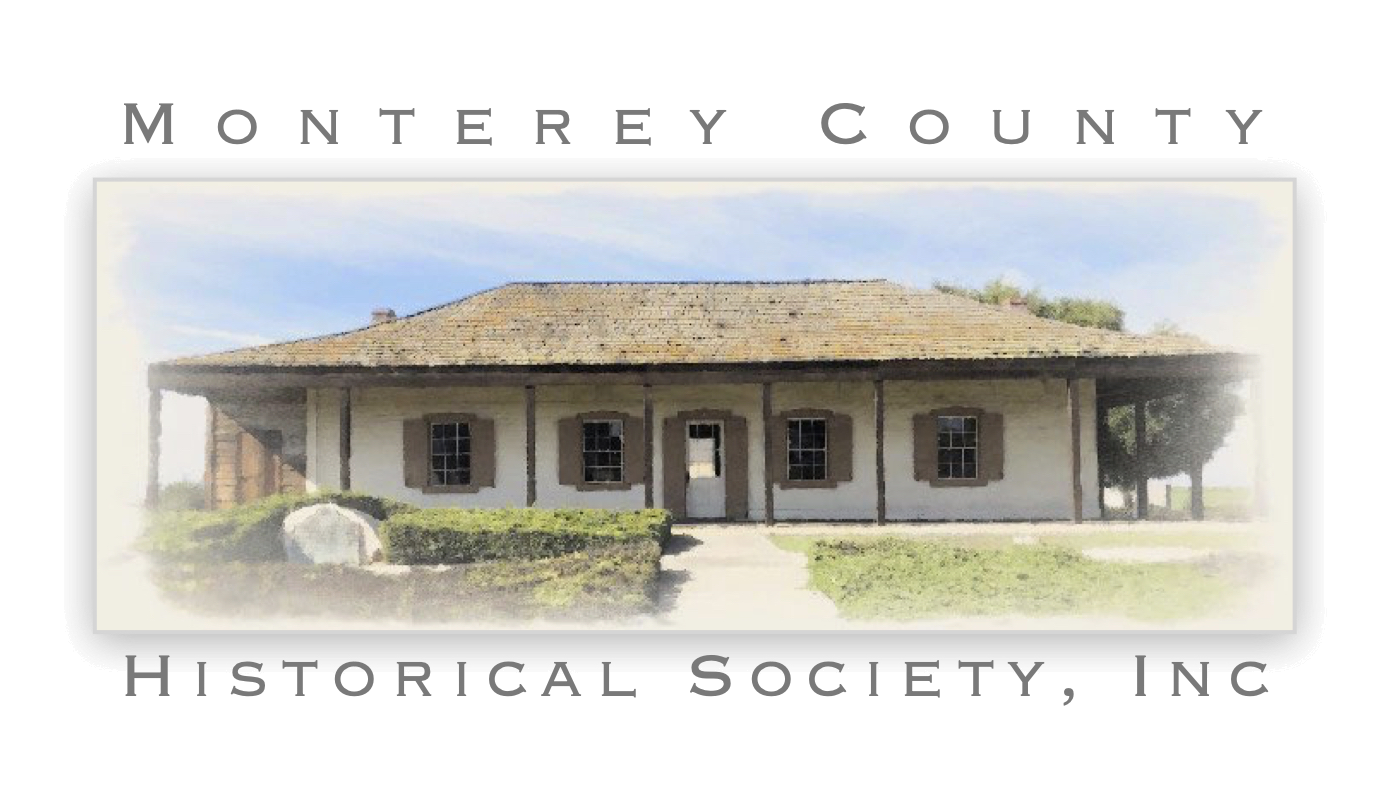Droughts and floods plagued the Salinas Valley grain farmers during the 1870s and 1880s. When conditions were bad it was difficult to break even, and when conditions were good prices dropped. Even worse, the Southern Pacific Railroad, with no competition, began charging unbearably high fees to transport grain to market.
In an attempt to circumvent the Southern Pacific, a group led by Carlisle S. Abbott began work on a narrow gauge railroad, the Monterey & Salinas Valley Railroad, between Salinas and the deep water port at Monterey. David Jacks, who owned huge tracts of land between Monterey and Salinas was the principal financier for the effort, but Abbott made a major investment. Articles of incorporation were drawn up on February 26, 1874, with Abbott as president and Jacks as treasurer. Groundbreaking was held on April 20, 1874 and later that day construction began under engineer John F. Kidder using 140 workers, half Caucasian and half Chinese. The bridge over the Salinas River was a major problem, but it was completed by late August. By the end of September the line was nearly completed, with the Salinas terminal located at what is now the intersection of Pajaro and Willow streets.
On October 23, 1874 the first train rolled, and the Monterey & Salinas Valley Railroad become the first narrow gauge to be operated in California. By the end of the year over 6,000 tons of grain had been transported to Monterey; the combined rail and steamship rates were averaging two dollars a ton less than those charged by the Southern Pacific. But in January of 1875 the Salinas River washed the bridge away, and it took two months to replace.
Business for the new railroad was so good that a second locomotive was added in 1875, but in January of 1876 the bridge washed out again, and this time it took six months to replace. Then came another misfortune: 1876-1877 was an extremely dry year, with less than five inches of rainfall, and the valley’s crops failed. The following year was extremely wet and crops were abundant, but an unseasonably late June rain destroyed most of the grain.
Carlisle Abbott, who had 6,000 acres planted in grain, could not ship a single sack. Seeing their opening, the Southern Pacific lowered their rates below those of the Monterey & Salinas Valley, and the line fell deeper into debt. In August of 1879 the Southern Pacific purchased the Monterey & Salinas Valley Railroad at a foreclosure sale and sold the narrow gauge track and rolling stock to the Nevada Central Railway–far enough away so it would not be a competitor. They abandoned the Salinas route, and instead built a standard gauge line from Castroville directly into Monterey using 14 whites and 200 Chinese to grade the route. They built a new bridge over the Salinas River, but it was washed away in April of 1880. They managed to replace it in time to support rail traffic to the Monterey Peninsula for the grand opening of the Del Monte Hotel in June.
In Salinas, Carlisle Abbott was unable to recover from the financial disaster of his narrow gauge line. He subsequently sold the Abbott House to David Jacks and moved to Arizona. This was a loss for the town, as Abbott had represented Salinas as a member of the California Assembly from 1876-1879. After many adventures in the southwest, Abbott retired and moved back to Salinas.
Sources:
- Breschini, Gary S., Trudy Haversat, and Mona Gudgel, 10,000 Years on the Salinas Plain: An Illustrated History of Salinas City, California (Heritage Media Corp., Carlsbad, 2000).
- Clark, Donald T., Monterey County Place Names (Kestrel Press, Carmel Valley, 1991).


